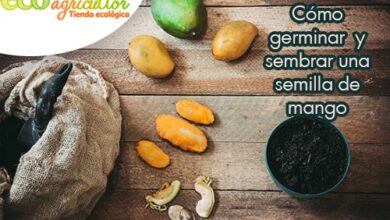Washingtonia Palm Tree: [Cultivation, Care, Pests and Diseases]
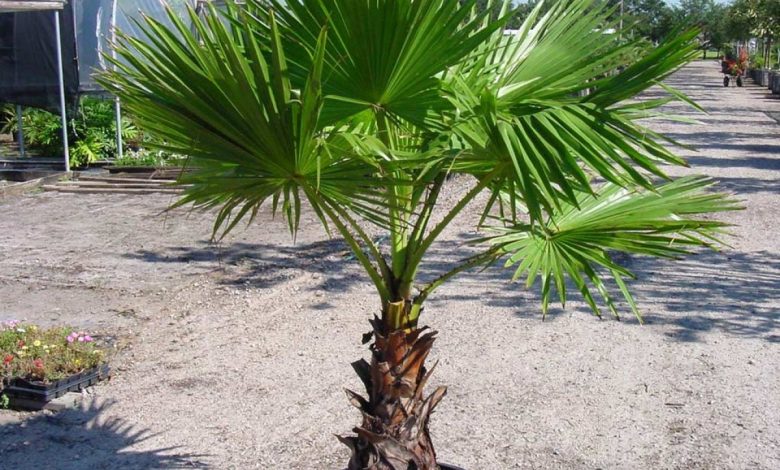
The Washingtonia palm is one of the most widely used palms in Mediterranean climates and is often called the California palm.
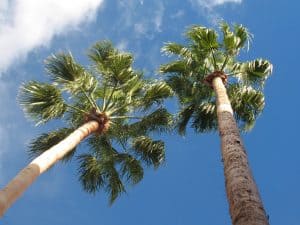 This common name is given based on its origins, since it comes from the border between the United States and Mexico.
This common name is given based on its origins, since it comes from the border between the United States and Mexico.
It is very similar to Washingtonia Robusta, but its trunk tends to be less thick and it is generally much shorter as well.
Would you like to give an exotic touch to your garden? Well, write down everything you need to know about this species that will do you very well.
What is the washingtonia palm tree?
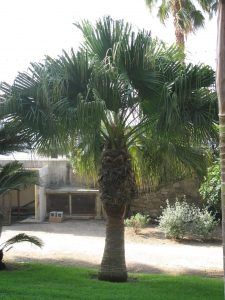 The Washingtonia palm tree is part of the palm family and is capable of generating a set of very striking leaves in the form of a wide fan.
The Washingtonia palm tree is part of the palm family and is capable of generating a set of very striking leaves in the form of a wide fan.
It has a descriptive feature on the trunk that is generated as a result of a bulge towards the center area, which adds greater showiness.
The flowers and fruits do not have a great ornamental value, but together with the structure of the palm tree they do achieve a very careful environment.
All these details have made it one of the favorite species when it comes to planting plants in coastal areas. In any case, by having them in the garden, they will result in a quite convenient natural shade.
Where should we plant it?
Outside , where it gets the most sunlight every day of the year.
It has a very strong structure and is able to resist both high temperatures and frosts around -5° C. It should be noted that it needs space, so it will be a good plan to keep it away from buildings.
When should the Washingtonia palm tree be grown?
Like almost all species, knowing that it is rather warm climates, the Washingtonia palm tree will have to be planted in spring.
How do we prepare the land?
The selection of the land must ensure that it has sufficient drainage and that living conditions similar to those of its origins are recreated.
To this end, the ideal is to ensure that the space where it will be planted has normal soil and ¼ of incorporated sand. This action, in turn, will help decrease the chances of compaction and make it easier for the water to drain well.
How to plant a Washingtonia palm tree step by step?
The sowing of the Washingtonia palm tree occurs, almost exclusively, through the seeds. These seeds should be collected during the spring or summer season, with summer being preferable because it comes after flowering.
Hydrate the seeds
The seeds will be hydrated in water to check which ones are in better condition. This will be verified by seeing those that remain at the bottom of the glass.
Pass the suitable seeds to a nursery
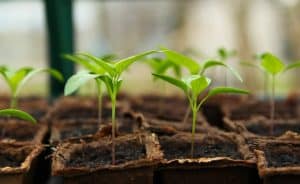 When the suitable seeds are ready, they will be transferred to a seedbed prepared with universal substrate and a little vermiculite.
When the suitable seeds are ready, they will be transferred to a seedbed prepared with universal substrate and a little vermiculite.
There the seeds will be buried at a rate of 2 or 3 per seedbed to ensure that at least one germination is generated in all of them.
It is important to moisten the substrate and keep the seedbed in full sun.
Transfer the germinated seeds to a pot
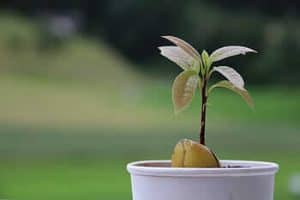 After the seeds germinate, they should be transferred to a pot to begin their growth phase.
After the seeds germinate, they should be transferred to a pot to begin their growth phase.
A Washingtonia palm tree can live in a pot for months, until it is noticed that it already has 2 or 3 leaves and it is time to transplant it.
Of course, this phase should be completed in spring, when the weather is much more pleasant so that the roots go through the adaptation process without complications.
In case it is not desired to cover an extended period, nurseries or agricultural stores could have these species. As they are already ready, it will only be necessary to transplant them to the place chosen for this purpose.
What care do you need?
Irrigation must be treated carefully because it does need it, but in very little quantity. This means that the soil should never become waterlogged and there will have to be an irrigation sequence in spring and summer.
The rest of the year there can be sporadic irrigation and if there is any rain, it will not be necessary. It will only be essential to apply enough moisture when it is in the growth stage to help it gain strength.
In order to keep the land in excellent condition and ensure that the health of the palm tree is the best, an annual fertilizer can be applied.
What pests and diseases attack the Washingtonia palm tree?
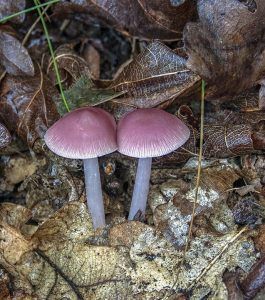 The Washingtonia palm is one of the most resistant species of this family and almost its only possibility of contracting a disease is due to excess watering.
The Washingtonia palm is one of the most resistant species of this family and almost its only possibility of contracting a disease is due to excess watering.
When there is a lot of water accumulation at the foot of the tree, fungal manifestations can be generated and thus cause damage to the trunk.
That is why it is so important to warn that the irrigation is so well taken care of and good drainage is ensured.
The pink fungus and the Phytophthora
Among the main fungi that attack, are the pink fungus and the phytophthora. Although they do not produce visible changes in the plant, they do cause rotting on the inside, so the leaves become very weak.
Red palm weevil and Paysandisia archon
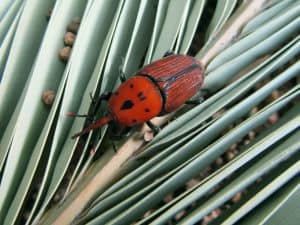 On the subject of pests, one must be very careful with the red palm weevil and a moth scientifically known as Paysandisia archon.
On the subject of pests, one must be very careful with the red palm weevil and a moth scientifically known as Paysandisia archon.
To combat them, if they appear, the best options are oriented towards ecological insecticides that you can buy in authorized stores.
If we are talking about palm trees, these will be the best alternatives for any garden and, best of all, they require very little care.
Although it is not as well known as its sister, the Washingtonia Robusta, and sometimes they are even confused, each one has its particular charm.
How long does the Washingtonia palm tree live?
It is a palm tree with a very good life expectancy of 500 years.
How long does the washingtonia palm tree take to grow?
It grows quickly and in 10 years or less, you could already enjoy a Washingtonia palm with an adult structure.
How long does it take to produce fruit?
The average is established from 5 years.
Can it be grown in a pot?
Yes, it can be grown in pots, although this condition will reduce the size that the plant will reach.
How many times does the washingtonia palm tree produce fruit?
It is a plant that generally produces fruit only once a year.
Should the washingtonia palm tree be pollinated to obtain fruit?
It all depends on the variety of palm tree because some can be pollinated by the wind, while others by insects.
How cold can the Washingtonia palm tree tolerate?
It is able to live in climates whose winter temperatures reach -10° C.
How many Washington palm trees can be planted per hectare?
It is not common for Washington palm trees to be planted on acres of land.
In any case, the average could be established on 300 copies.
What type of fertilizer does the washingtonia palm tree need?
Fertilization is not part of its fundamental care after it is established.
It will help in its early stages so that vegetative growth develops more quickly.
How much heat and/or drought can the Washingtonia palm tolerate?
It can withstand extreme heat up to 45°C.
It is also very resistant to drought.
Bibliography and references
- Garceran, Teresa. (2012). 30 palm trees. Description, care and cultivation, practical sheets. From Vecchi Editions. Barcelona, Spain.
- Abbey Sanchez, Ricardo; Rocamora Osorio, Carmen; Puerto Molina, Herminia. (2016). VIII Iberian Congress of Agroengineering: Challenges of the new Mediterranean agriculture. Miguel Hernandez University. Elche-Spain.
- Drénou, Christophe. (2000). Pruning of ornamental trees. From why to how. Mundi-Press Books. Madrid Spain.
- From La Torre Manca, Santiago J.; Defago, Maria T.; Except Adriana. (2014). Phytophagous insects associated with palm trees in the city of Córdoba, Argentina. Argentine Entomological Society. Buenos Aires, Argentina. Reproduced from: http://www.redalyc.org/articulo.oa?id=322032818008
- Dugand, Armando. (1965). The Palm Trees and the Earth. Institute of Natural Sciences, National University of Colombia. Chaldasia. Barranquilla, Colombia. Reproduced from: https://revistas.unal.edu.co/index.php/cal/article/download/33661/33634%3A%3Apdf
[pt_view id=”f54fcb1evj”]

![Photo of The Dieffenbachia: [Characteristics, Planting, Care, Irrigation and Substrate]](https://www.complete-gardening.com/wp-content/uploads/2022/08/the-dieffenbachia-characteristics-planting-care-irrigation-and-substrate-390x220.png)
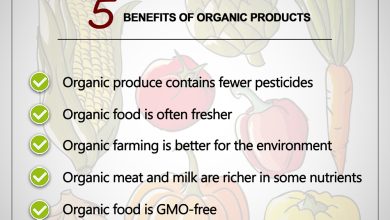
![Photo of How to Plant Jujube: [Complete Guide]](https://www.complete-gardening.com/wp-content/uploads/2022/08/how-to-plant-jujube-complete-guide-390x220.jpg)
